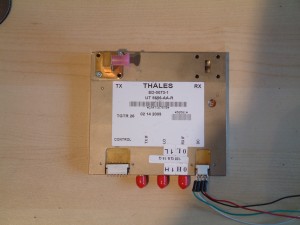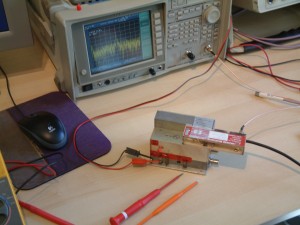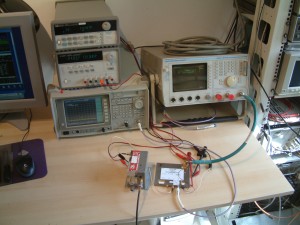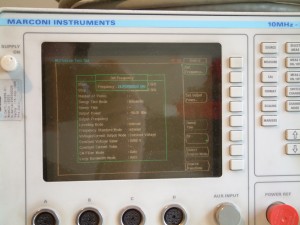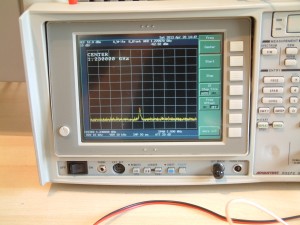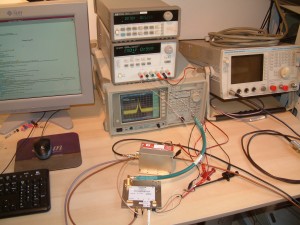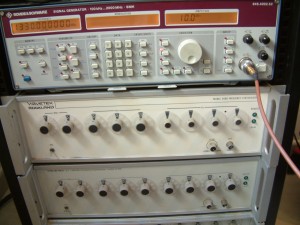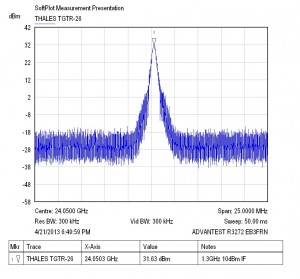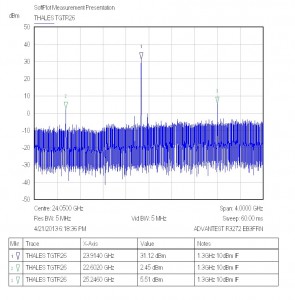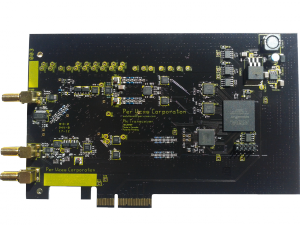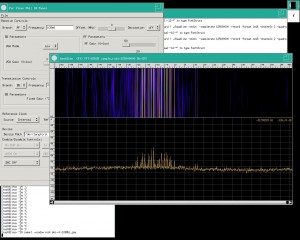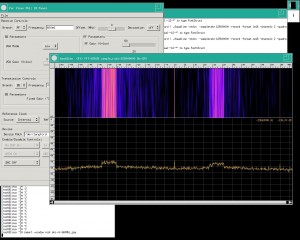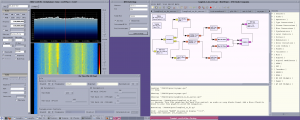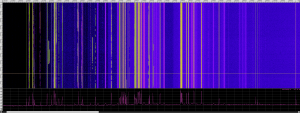In the middle of 2009 I bought a 26GHz transceiver to use in amateur-DSN. It was to try to receive the 25GHz downlink of the Lunar Reconnaissance Orbiter spaceprobe. After much time without succes and after the confirmation of Paul J Marsh, that he never has received the probe too I decided give a new life to the module and try to use in 24GHz amateud band.
The module is a THALES TGTR-26 and googling a bit, looks the some Autralian amateurs are using the module without problems. The first was get a suitable local oscillator , this unit should accept a frequency range from the 10 to 14Ghz. The idea is ise a IF of 1.3Ghz then need a LO over 11.45Ghz. Using the cavity and electronics of a Magnum MC PLS22 that accepts 10MHz input reference and the SRD and output filter of a Magnum MC PLX31 that cover from 10.4 to 10.7GHz, I put all totgether and after retuning the SRD I get a nice brick of 11.36 GHz, pefect to use as LO.
The TGTR-26 uses +5V (1A),-10V and +8V to enable the TX branch. One time solved the power issues, the unit was start to receive very well, giving a conversion gain of 29dB aprox. To test the RX branch I was use the Marconi / Aeroflex 6203 microwave test set as signal reference.
After to verify the good results of the RX branch, is the time of the TX branch. To put the transceiver in TX only need aply +8V in the TX pin. The result was amazing, receiving peaks of 32dBm, it can be more than 1.5W! This test has ben used a 10dBm IF at 1.3GHz.
The unit is suitable for amateur use in 24GHz. Really amazing how this modules that can be purchased in ebay and can be recycled to give a new life.
